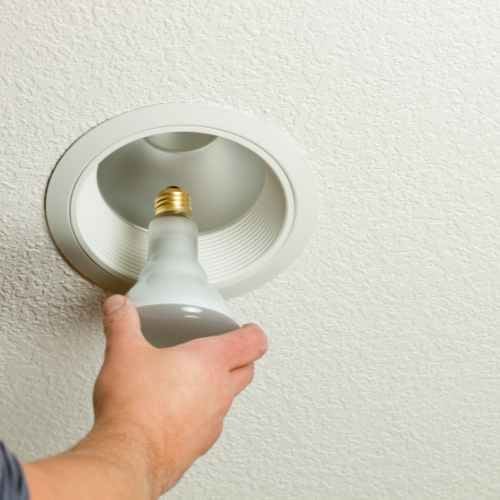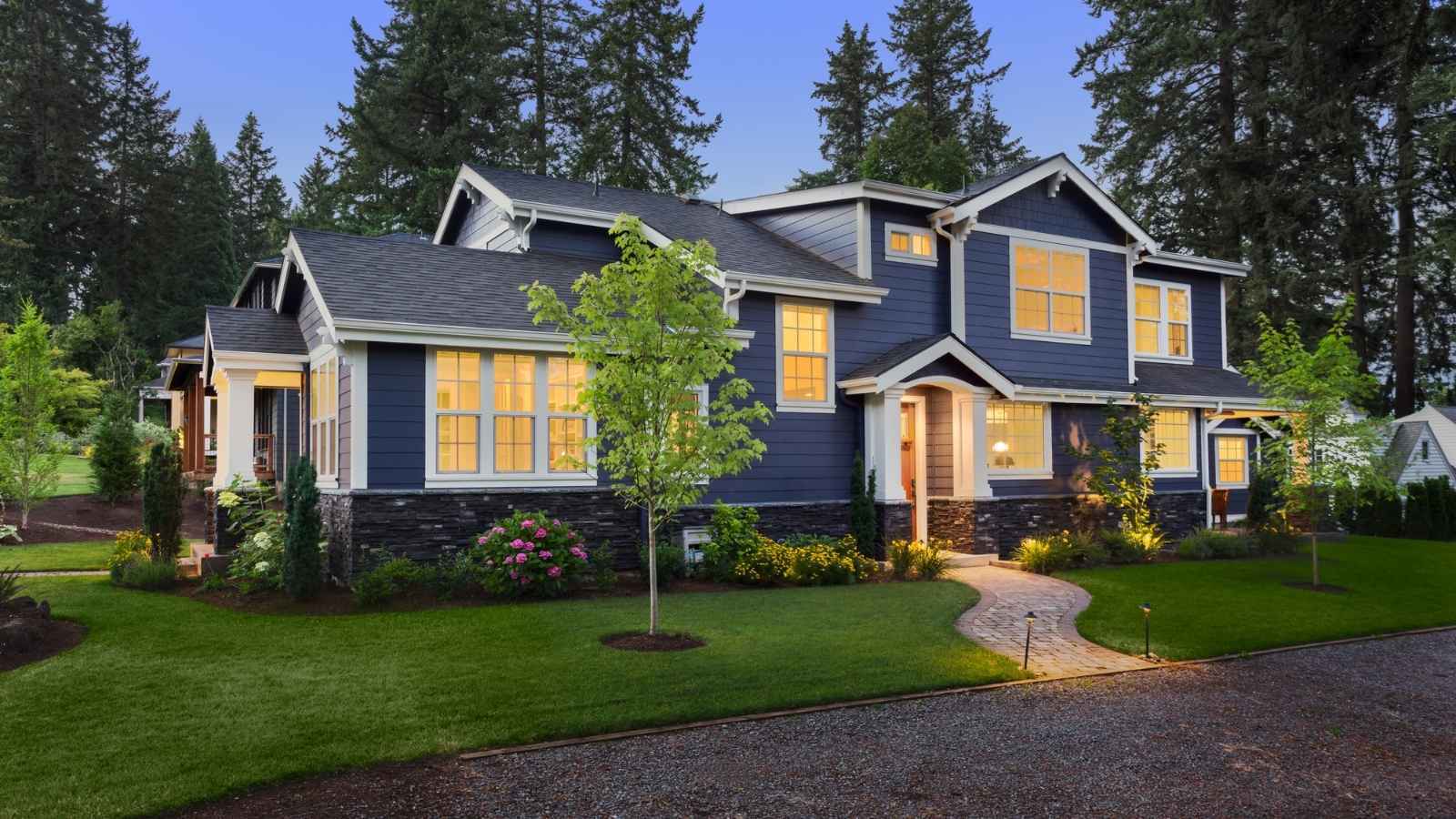Is It Time to Replace Your Old Can Lights? A Homeowner's Guide
When was the last time you thought about the lighting in your home? Suppose your can lights (also known as recessed lighting) have been flickering, overheating, or seem outdated. In that case, it might be time to consider a change. In this guide, we'll walk you through the signs that it's time to replace your old can lights, the benefits of upgrading, and whether you should take on the project yourself or call in a pro.
What Are Can Lights?
First, let's discuss can lights. Can lights, also called recessed lights, are ceiling lights that sit flush with the ceiling, creating a sleek, streamlined look. They are often found in kitchens, living rooms, and hallways because they provide focused, even lighting without taking up any visual space. Understanding the importance of proper lighting design and placement can empower you to make informed decisions about your home's lighting.
They've been around for years and are popular for their versatility and ability to light up a room without being intrusive. But just like any part of your home, can lights get outdated or show signs of wear and tear?

Signs Your Can Lights Need Replacing
So, how do you know when to replace your can lights? Here are a few telltale signs:
1. Flickering or Dimming Lights:
Nothing ruins a cozy evening like flickering lights. If your can lights have started flickering or seem dimmer than they used to be, it could indicate that your bulbs are reaching the end of their life—or worse, there could be an issue with the wiring. Flickering lights aren't just annoying; they can also be dangerous if left unchecked.
2. Outdated Design:
Home décor trends change over time, and lighting is no exception. If your can lights give off a vibe that's more "1980s kitchen" than "modern elegance," it might be time for a refresh. Updating your lighting can instantly give your space a more contemporary look.
3. Energy Inefficiency:
Older can lights often use incandescent or halogen bulbs, which aren't precisely energy-friendly. These types of bulbs use more electricity and produce more heat. Replacing them with LED lights can help you save on your energy bills while keeping your home cooler—especially in the summer.
4. Overheating:
Speaking of heat, if your can lights are getting hot to the touch or you've noticed a lot of warmth around the fixture, that's a red flag. Overheating lights can pose a fire risk, so replacing them before they become a hazard is best.
5. Buzzing or Humming Noises:
Are you hearing a strange buzzing or humming sound from your can lights? That could mean a problem with the wiring or the light fixture itself. Either way, it's a sign that something isn't right and needs attention.
6. Damaged or Loose Trim:
Over time, the trim around your can lights can become damaged or loose. While this might seem minor, damaged trim can let dust and debris get inside the fixture, which could lead to electrical problems later.
7. Moisture Exposure:
If your can lights are in moisture-prone areas like the bathroom or kitchen, you'll want to watch them for signs of corrosion or water damage. Moisture and electricity don't mix well, so if you notice any rust or dampness around your lights, it's time for a replacement.

Why Replace Old Can Light Fixtures?
Outdated light fixtures aren't just an eyesore—they can also affect your home's functionality, efficiency, and safety. Here are some compelling reasons to replace old fixtures, ensuring your home is a safe haven:
- Improved Aesthetics: One of the most obvious reasons to replace old light fixtures is to update the look of your home. Lighting trends evolve, and what was stylish 10 or 20 years ago may now make your home feel dated. Installing modern fixtures can refresh the look of any room, creating a more contemporary and appealing atmosphere.
- Energy Efficiency: Older light fixtures often rely on inefficient bulbs like incandescent or halogen, which consume more electricity and generate more heat. Replacing these fixtures with newer ones that support LED or CFL bulbs can significantly reduce your energy bills and lower your home's environmental footprint.
- Enhanced Lighting Quality: Newer fixtures often offer better lighting control, whether it's adjustable brightness, color temperature options, or improved light distribution. Replacing your old fixtures can enhance the ambiance of your space, making it more functional for tasks and more comfortable for everyday use.
- Increased Safety: Old fixtures can pose safety hazards, especially if they've suffered wear and tear over the years. Worn-out wiring, loose connections, or fixtures that have become hot to the touch are all potential fire hazards. Replacing them with modern, well-made fixtures eliminates these risks and ensures your home is safer.
- Compatibility with Smart Technology: With the rise of smart home technology, many homeowners are upgrading to smart lighting systems. These systems allow you to control your lights remotely, set schedules, and even change colors or dimming levels using voice commands. To take advantage of these features, you may need to replace your old fixtures with ones compatible with smart bulbs and systems.
Upgrading outdated light fixtures can boost your home's value, especially if you plan to sell. Potential buyers are often drawn to homes with modern features and energy-efficient upgrades. Replacing old, inefficient fixtures can make your home more appealing and easier to sell at a higher price, giving you a reason to be optimistic about your investment.

DIY vs. Hiring a Professional Electrician
Should you tackle this project yourself or call in a pro? Here's what you need to know:
DIY Can Light Replacement:
This can be a relatively easy DIY job if you just replace the bulbs or swap the trim. Before you start, turn off the power at the breaker and follow any instructions carefully to avoid accidents.

Why You Need an Electrician to Replace Recessed Light Fixtures
While it might seem tempting to tackle light fixture replacements on your own, hiring an electrician is often the safest and most reliable option. Here's why:
- Safety First: Electrical work can be dangerous if not done correctly. Even simple tasks like changing a light fixture involve dealing with live wires, which can lead to electric shock or fire hazards if mishandled. Electricians are trained to work with electrical systems safely and know how to shut off power properly, connect wires, and ensure that everything is grounded and secure.
- Compliance with Electrical Codes: Local electrical codes protect homeowners and ensure that electrical work is performed safely. A licensed electrician is familiar with these regulations and ensures your fixture replacement is up to code. This is especially important if you plan to sell your home, as improper electrical work can cause problems during inspections.
- Complex Wiring Issues: Not all lighting fixtures are straightforward. Older homes, in particular, may have outdated wiring or circuits that can't support modern fixtures. Electricians can identify potential issues and make the necessary adjustments, such as rewiring or upgrading the electrical panel, to ensure your new fixtures work correctly.
- Troubleshooting Existing Problems: If your old fixture was buzzing, flickering, or had other issues, simply replacing it might not solve the underlying problem. Electricians have the expertise to diagnose and address any electrical issues, ensuring your new fixture functions as it should.
- Peace of Mind: Hiring an electrician gives you peace of mind that the job is done correctly and safely. Plus, many electricians offer warranties on their work, so you're covered if any issues arise after installation.

Choosing the Right Recessed Lights for Your Home
When you're ready to upgrade your can lights, consider switching to LED. Not only are they energy-efficient, but they also produce less heat and last much longer than traditional bulbs.
For the tech-savvy homeowner, smart can lights are also a great option. These lights can be controlled with your phone or voice assistant, allowing you to adjust the lighting without getting off the couch.
Lastly, think about your lighting design. Placement is critical when it comes to can lights, so consider where you'll need the most light and how it will affect the overall look and feel of the room.
Replacing your old can lights might seem like a small project. Still, it can significantly impact your home's safety, energy efficiency, and overall appearance. If you've noticed any signs we've discussed, it's probably time to switch. And remember, if you're ever unsure, feel free to call a professional electrician to handle the job.
Your home deserves the best lighting possible, so why wait? Upgrade today and enjoy a brighter, safer space!





